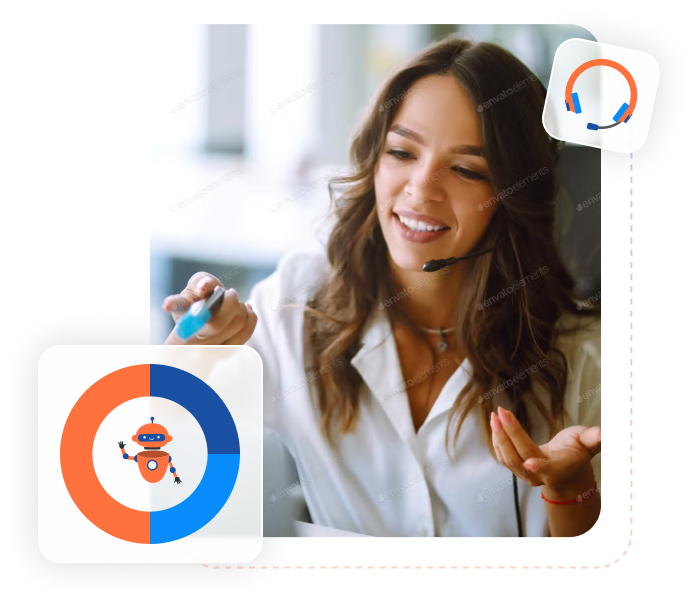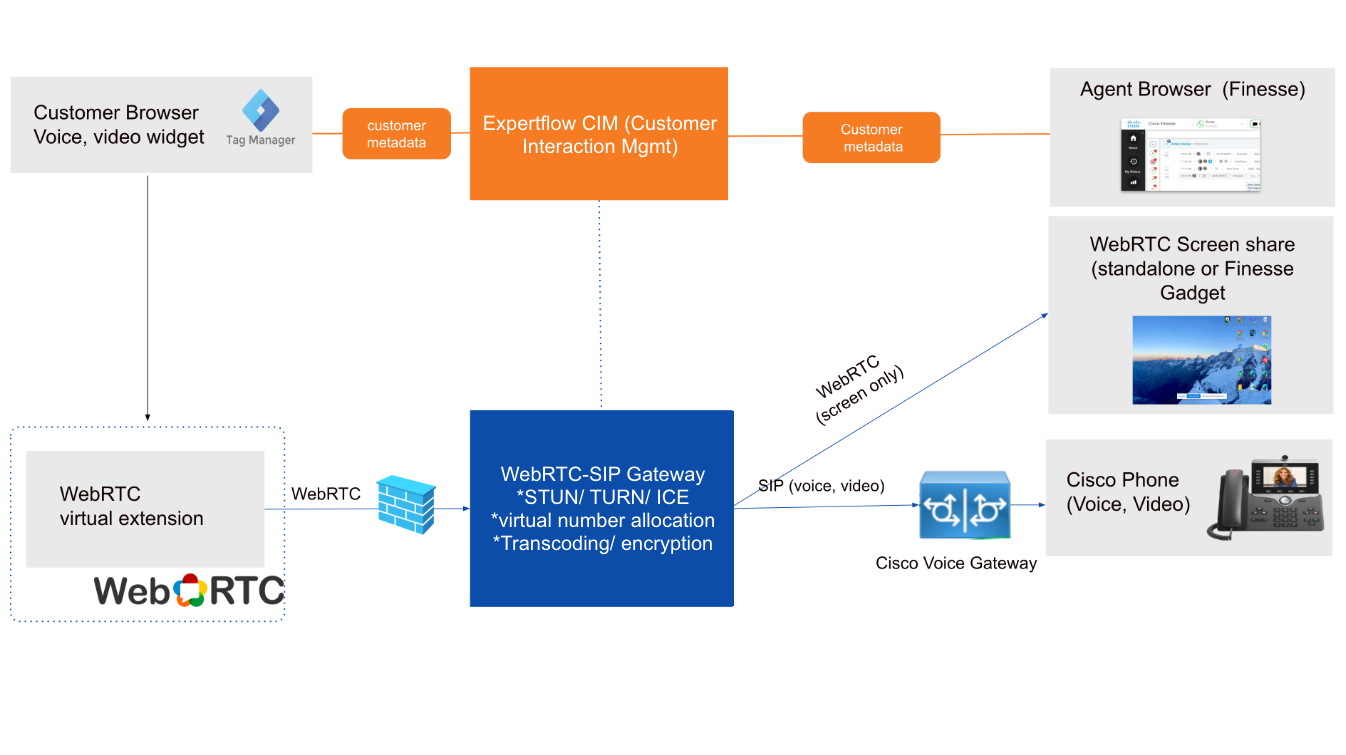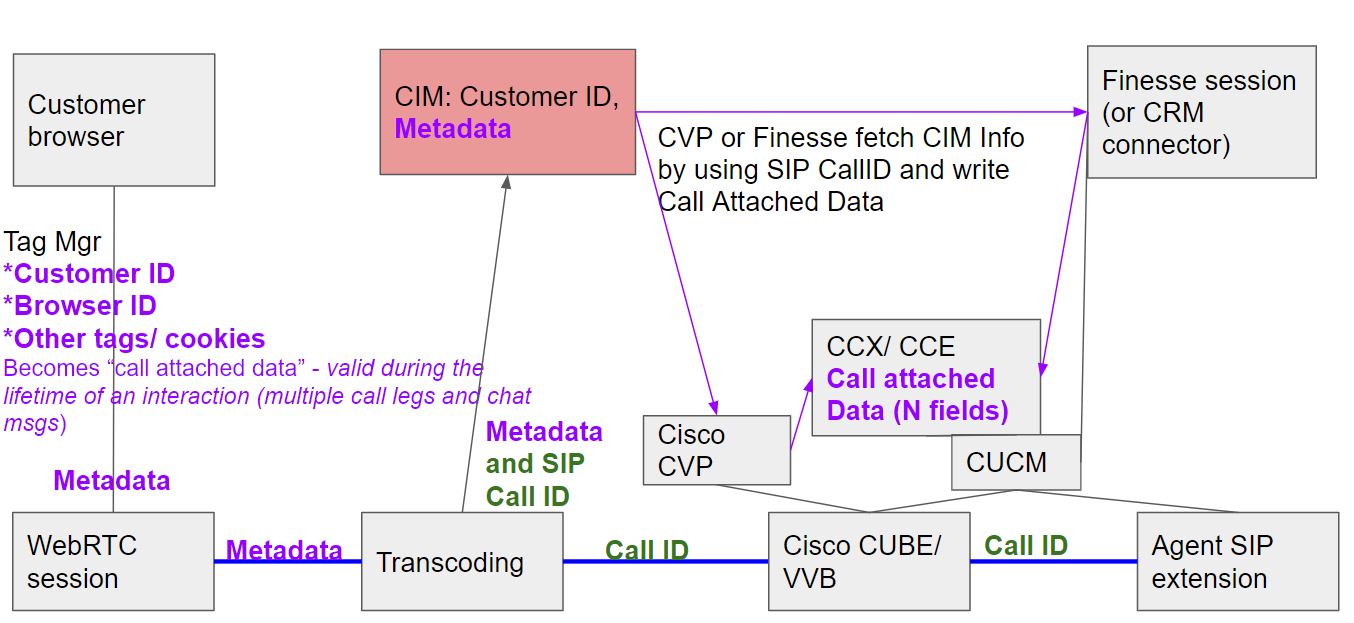
WebRTC to SIP Gateway
Customers use the WebRTC capabilities of their web browser and webcam to interact with agents. Metadata (customer name, email,...) is captured from their browser via a tag management solution. On the agent side, voice and video are transcoded to SIP and forwarded to the agent's Voice/ Videophone. The screen sharing element is available as a Finesse Gadget.
The same webphone / WebRTC capability can be enabled for agents as well. This eliminates the need for a hardphone or installable softphone such as IP communicator or Jabber.
Features
Available features:
- Browser or SIP phone-based voice and video
- Browser-based screen-sharing
Features with additional licenses
- Hybrid Chat
- file sharing
- recording
WebRTC doesn't allow for
- mouse or keyboard control
- screen annotation, field masking, pointer
The customer identifies himself to the browser to the client's website. This browser in turn is associated with a customer profile in CIM using a cookie that will be stored in the customer's browser. The customer identity is transmitted through a tag manager data layer on the website.
Comparison
| Web and Browser events Events | DOM Sharing/ Co-browsing | Screen sharing | WebRTC | |
| Vendors | Expertflow | Surfly, Acquire, unblu | Jabber Guest,Cisco Webex, Zoom | Expertflow |
| Sharing what | pages visited and actions taken by customer on a website. Company webpages only. | Screenshare-like experience, location of the mouse Draw something to the customer from the agent. Company webpages only. | entire screen or browser. control of mouse and keyboard | content of a browser or an entire screen |
| Field Masking | n/a | possible | not possible | not possible |
| Annotation | n/a | possible | possible | not possible |
| Agent sees | text notifications “Customer clicked on button”, “Customer navigated to www.expertflow.com.” | Web events. Selective customer screen replication (masking, mouse, annotation) | customer screen pixel-by-pixel, plus overlay (laser pointer, annotation,...) | customer screen pixel-by-pixel (plus voice and video) |
| Technology | Tag Management (page views, clicks, form entries, selected DOM events..) | DOM events on a webpage | entire screen | entire screen (WebRTC) |
| Required permissions | Usually accept a cookie | Usually accept a cookie | Download and install a plugin, allow access to screen and mouse/ keyboard controls | WebRTC-compatible browser, usually allow cookies. Allow access to screen. |
| Bandwidth | very low - selected events only, from Webserver to agent | higher - all web events, from Webserver to agent | High - every pixel from customer to agent | High - every pixel from customer to agent |

Transfer of customer data from website to callcenter
This solution includes a ICE (Interactive Connectivity Establishment) server that can be located on the client's premises or using a public server for network address translation (ICE, STUN, TURN).
Agents can use a normal Cisco SIP phone (such as Jabber), or Expertflow's WebRTC client.
With Expertflow CIM, it is possible to capture customer data from a website before a WebRTC call, and transfer the same to a Cisco Callcenter as call attached data alongside the call.
Information is captured on the website using tag management, transferred to the WebRTC switch using RTCDataChannel, transferred to CIM, from where it can be read by CVP or Finesse and written as Call Attached data/ Peripheral Variables/ Expanded Call Context (ECC). Implementing this solution usually requires professional services of Expertflow.


